Two blocks, of masses M and 2M, are connected to a light spring of spring constant K that has one end fixed, as shown in figure. The horizontal surface and the pulley are frictionless. The blocks are released from when the spring is non deformed. The string is light.
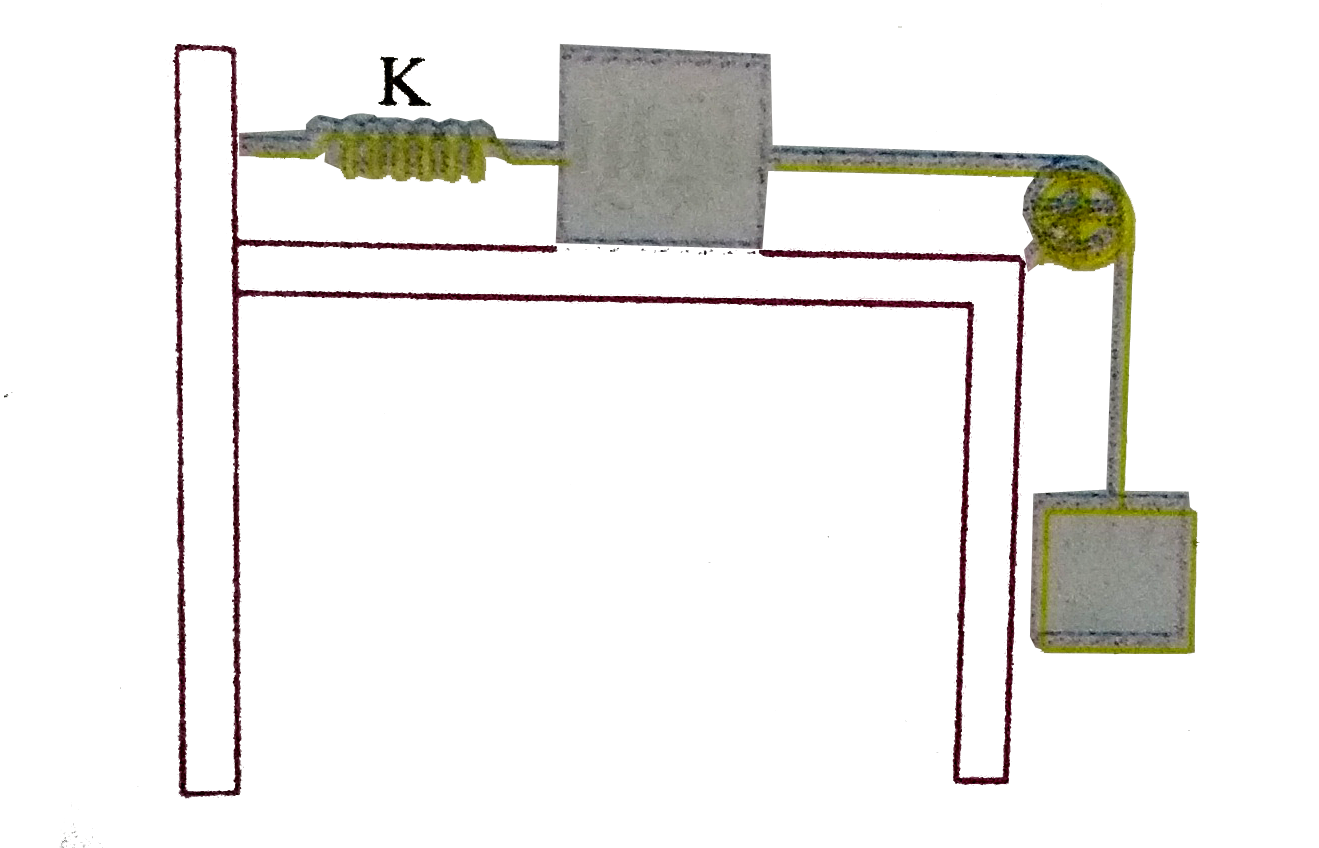 .
.
Maximum extension in the spring is 4MgK.
Maximum kinetic energy of the system is 2M2g2K
Maximum energy stored in the spring is four times that of maximum kinetic energy of the system.
When kinetic energy of the system is maximum, energy is the spring is 4M2g2K
The correct Answer is:A, B, C
Maximum extension will be at the moment when both masses stop momentarily after going down. Applying W-E theorem from starting to that instant.
kf−ki=Wsp+Wten.
0−0=2Mgx+(−12Kx2)+0
x=4MgK
system will have maximum KE when net force on the system becomes zero. There fore
2Mg=T and T=kx
⇒x=2MgK
Hence KE will be maximum when 2M mass has gone down by 2MgK.
Applying W/E theorem
kf−0=2Mg(2Mg)K−12K4M2g2K2
kf=2M2g2K2
Maximum energy of spring
12K(4MgK)2=8M2g2K
Therefore maximum spring energy =4× maximum KE
When KE is maximum x=2MgK.
Spring energy =12K4M2g2K2=2M2g2K2
i.e. (D) is wrong.
Similar Questions
Two blocks of masses m and M are connected by an inextensible light string . When a constant horizontal force acts on the block of mass M. The tension in the string is
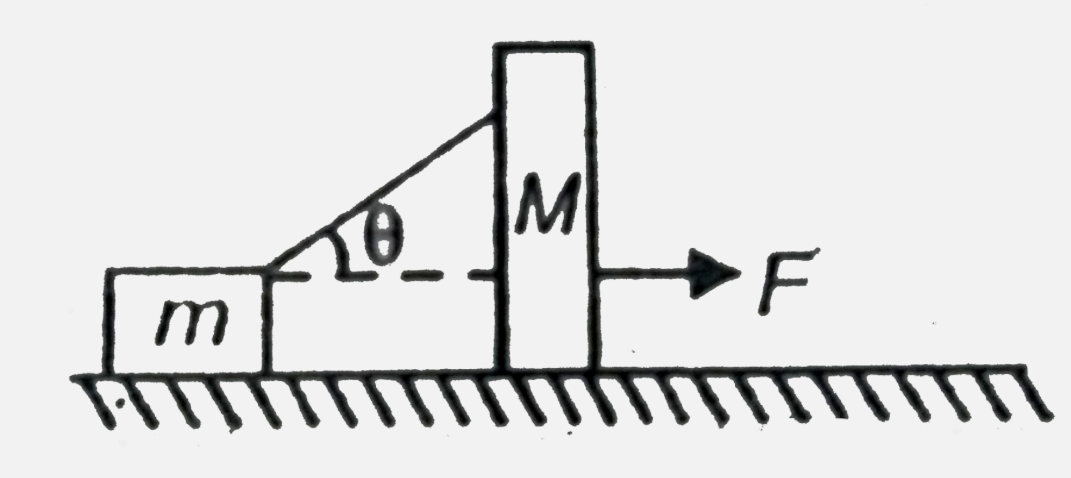
View SolutionA block of mass m held touching the upper end of a light spring of force constant K as shown in figure. Find the maximum potential energy stored in the spring if the block is released suddenly on the spring.
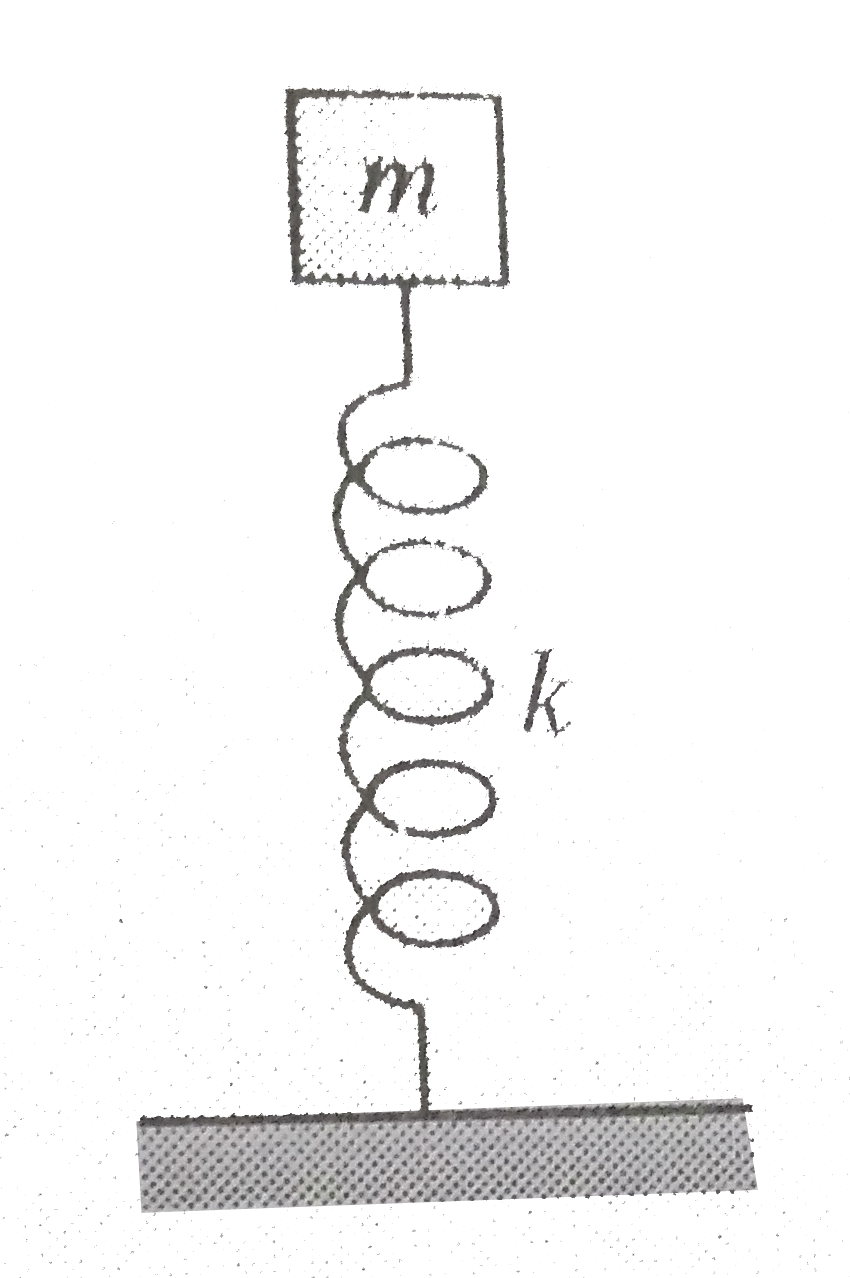
View SolutionTwo blocks each of mass m are connected over two light and frictionless pulleys and a fixed wedge by a light string as shown in figure. The tension in the string is :
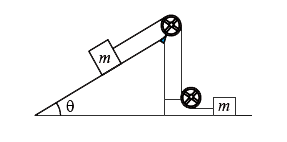
View SolutionTwo blocks A and B of mass m and 2m respectively are connected by a light spring of force constant k. They are placed on a smooth horizontal surface. Spring is stretched by a length x and then released. Find the relative velocity of the blocks when the spring comes to its natural length

View SolutionTwo blocks of masses m and m' are connected by a light spring on a horizontal frictionless table . The spring is compressed and then released . Find the ratio of acceleration of masses .
View SolutionA block of mass m is connected to another .block of mass M by a massless spring of spring constant k. A constant force f starts action as shown in figure, then:

View SolutionA block of mass m is attached to one end of a mass less spring of spring constant k. the other end of spring is fixed to a wall the block can move on a horizontal rough surface. The coefficient of friction between the block and the surface is μ then the compession of the spring for which maximum extension of the spring becomes half of maximum compression is .
View SolutionTwo block of same mass'm' are joined with an dideal spring of spring constant k and sept on a rough surface as shown in figure. The spring is initially unstretched and coefficient of friction between the blocks and horizontal surface is μ and 2μ respectively. What should be the maximum speed of block 'A' such that the block 'B' does not move ?
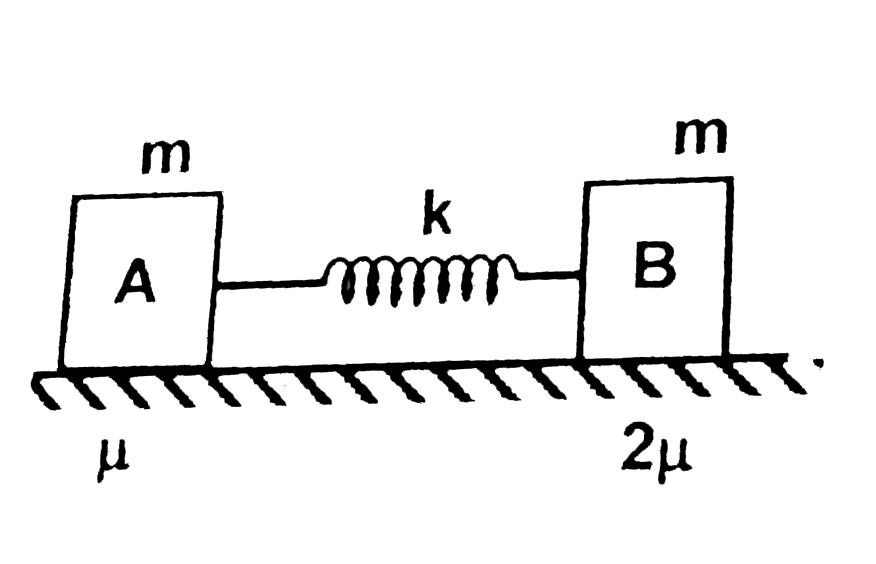
View SolutionA block of mass m is attached to a spring of force constant k whose other end is fixed to a horizontal surface. Initially the spring is in its natural length and the block is released from rest. The average force acting on the surface by the spring till the instant when the block has zero acceleration for the first time is

View SolutionTwo block of masses M and m are connected to each other by a massless string and spring of force constant k as shown in the figure. The spring passes over a frictionless pulley connected rigidly to the egde of a stationary block A. The coefficient of friction between block M and plane horizontal surface of A is μ. The block M slides over the horizontal top surface of A and block m slides vertically downward with the same speed. The mass M is equal to
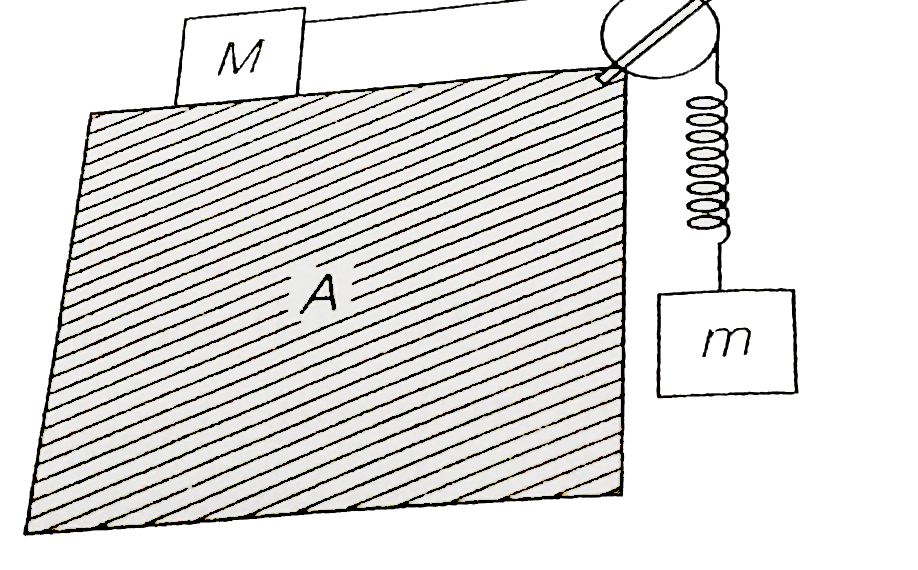
View Solution
